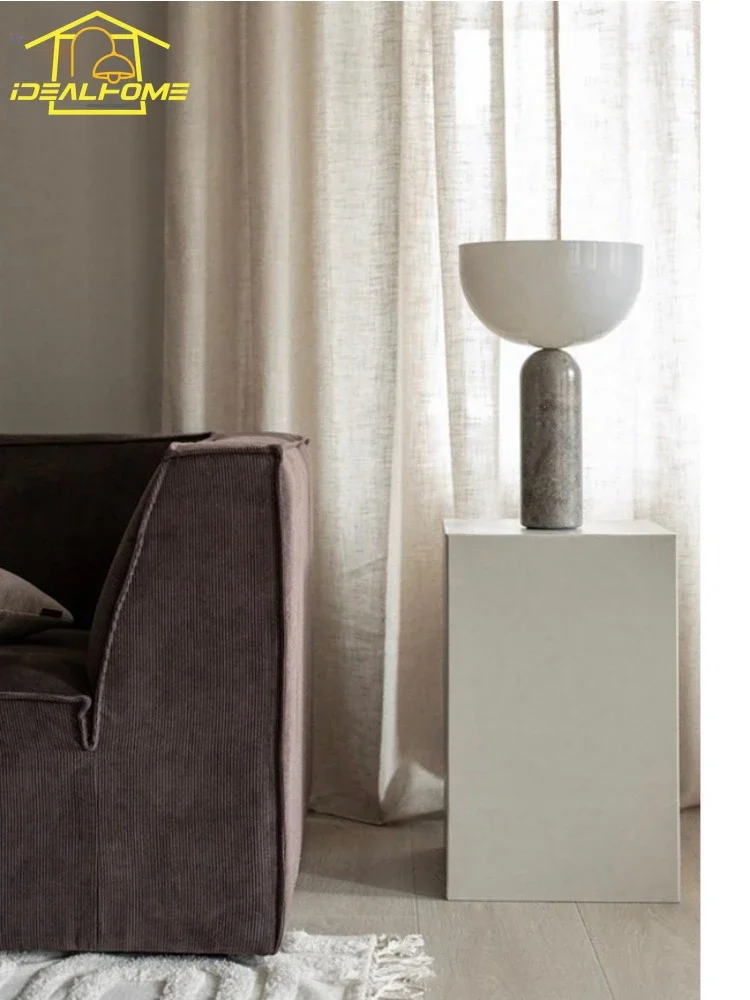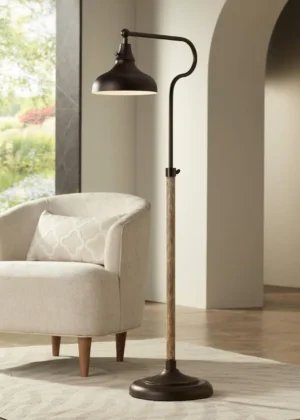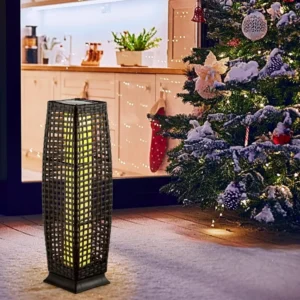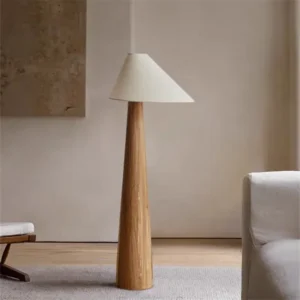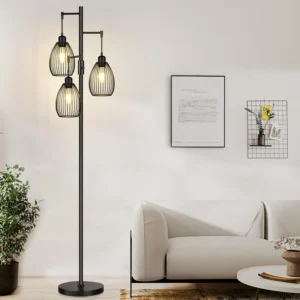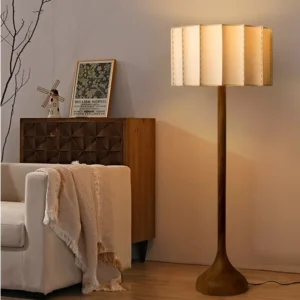The Essence of Natural Wood Arc Lighting
In the realm of interior design, few lighting elements capture the perfect balance of art and function quite like natural wood arc lamps. These distinctive fixtures represent a thoughtful marriage between organic materials, artistic form, and practical illumination that transforms ordinary spaces into havens of comfort and style. Unlike conventional lighting options, wood arc lamps bring a dual warmth to any room—the visual and emotional warmth inherent in the natural wood material itself, combined with the gentle, ambient glow of well-diffused light.
The connection between natural elements in our homes and our psychological well-being is well-established. As our daily lives become increasingly digital and urban, incorporating biophilic elements—design aspects that connect us to nature—has become not just stylistically appealing but emotionally necessary. Wood arc lamps answer this need beautifully, bringing the organic textures, colors, and curved lines of the natural world directly into our living spaces.
What truly distinguishes these fixtures from other lighting options is their remarkable trifecta of qualities. The genuine wood components provide organic texture and character impossible to replicate with synthetic materials. The sweeping arc design creates a dramatic visual statement while serving the practical purpose of positioning light exactly where needed. And the quality of illumination—typically warm and inviting—completes the sensory experience by casting a glow that fundamentals of choosing the perfect arc floor lamp explain is ideal for creating restful, welcoming environments.
This harmonious combination delivers much more than mere illumination—it creates an atmosphere, a mood, a feeling of being embraced by your space rather than simply existing within it.
Understanding The Three Core Elements of Warmth
When we discuss the unique appeal of natural wood arc lamps, we’re really talking about three distinct elements working in perfect harmony: the material, the form, and the light quality. Each component contributes its own special quality to create lighting fixtures that transcend mere functionality to become central design elements in thoughtfully curated interiors.
These three pillars—natural wood construction, the graceful arcing form, and warm, ambient light—have gained tremendous popularity in contemporary interior design precisely because they work together to satisfy both practical needs and aesthetic desires. While any quality lamp might adequately illuminate a space, wood arc lamps do so while simultaneously adding architectural interest, natural texture, and sculptural beauty that enhances the entire room.
In the sections that follow, we’ll explore each of these elements in detail, examining why they matter and how they contribute to creating spaces that feel both sophisticated and deeply welcoming.
Natural Wood: The Heart of Organic Warmth
Unlike manufactured materials, wood brings an inherent warmth and character to any space through its natural variation, organic patterns, and rich heritage. Each piece of wood tells its own story through grain patterns that are as unique as fingerprints—swirls, stripes, and flames that capture light differently from every angle and add visual movement to static forms. This natural variation ensures that every wood arc lamp possesses unique character impossible to duplicate exactly.
The specific type of wood used in an arc lamp dramatically influences its overall aesthetic appeal and compatibility with different interior styles. Each species offers its own distinctive qualities:
- Oak: Renowned for exceptional durability and prominent grain patterns that add visual texture. Available in both red oak (warmer tones) and white oak (cooler, more contemporary feel)
- Walnut: Characterized by rich, chocolate-brown tones that darken beautifully with age, walnut exudes luxury and pairs wonderfully with mid-century and contemporary designs
- Maple: Offers a light, creamy color with subtle grain, making it exceptionally versatile for nearly any design aesthetic, particularly Scandinavian and minimalist interiors
- Bamboo: Though technically a grass, bamboo provides exceptional sustainability credentials alongside distinctive joinery and a contemporary, eco-conscious appeal
- Ash: Prized for its remarkable flexibility (crucial for creating smooth arcs) and light color with distinctive, pronounced grain patterns
The finishing treatment applied to the wood further influences both aesthetics and durability. Oil finishes penetrate the wood to enhance natural grain patterns while maintaining a matte, organic feel. Conversely, lacquer or polyurethane finishes create more protection and often result in a glossier appearance that highlights the wood’s color more than its texture.
Beyond mere appearance, the craftsmanship involved in bending, joining, and finishing wood for arc lamps requires considerable skill. Quality wood arc floor lamps showcase masterful joinery, smooth curves, and impeccable balance that reflect the maker’s expertise and attention to detail—qualities that translate into fixtures that remain beautiful and functional for decades.
The Graceful Arc: Engineering Elegance
The distinguishing feature of arc lamps—their sweeping curved form—represents a perfect marriage of practical function and aesthetic beauty. This elegant design solution brilliantly addresses a common lighting challenge: how to provide overhead illumination without the permanence and installation requirements of ceiling fixtures. By extending outward and over from a weighted base, arc lamps deliver directional light exactly where needed while maintaining the flexibility to be repositioned as needs change.
From a visual perspective, the flowing curve of an arc lamp introduces an element of graceful movement into spaces that might otherwise consist primarily of straight lines and right angles. This organic form creates visual interest and softens the overall feel of a room, making arc lamps particularly valuable in contemporary interiors that might otherwise feel stark or rigid.
Even when not illuminated, quality wood arc lamps function as sculptural elements—three-dimensional art pieces that define space and create visual anchors within a room. This dual functionality makes them especially valuable in today’s multi-purpose spaces, where furnishings must often serve multiple roles.
The engineering behind a successful arc lamp is more complex than it might initially appear. Creating a stable, properly balanced fixture requires careful calculation of counterweight systems, typically achieved through a substantial base that prevents tipping while maintaining an aesthetically pleasing proportion. The wooden components must be carefully selected, treated, and joined to maintain the perfect curve without warping or weakening over time.
Space efficiency represents another significant advantage of arc designs. Unlike traditional floor lamps that require floor space directly adjacent to seating areas, space-saving benefits of arc lighting allow the base to be positioned behind or beside furniture while the light source extends overhead where needed, making them ideal solutions for smaller living areas or tight corners.
The Science of Warm Light: Creating Ambiance
The final and perhaps most transformative element of wood arc lamps is the quality of light they provide. While “warm light” might seem like a subjective description, it actually refers to specific technical characteristics that can be measured and selected with precision.
In lighting terminology, “warmth” is defined by color temperature, measured in Kelvins (K). Lower numbers indicate warmer light—for truly cozy, inviting environments, look for bulbs in the 2700K-3000K range. This spectrum produces a soft, golden glow similar to traditional incandescent lighting or candlelight. Higher numbers (4000K+) create cooler, bluer light more similar to daylight—efficient but often less relaxing for residential spaces.
Equally important but less commonly discussed is the Color Rendering Index (CRI), which measures how accurately a light source reveals the true colors of objects compared to natural light. High-CRI bulbs (90+ rating) showcase the rich tones and subtle variations in wood grain, textiles, and other interior elements far more effectively than lower-quality alternatives. This quality is particularly important when pairing lighting with natural materials like wood, as it ensures the material’s inherent beauty is properly revealed.
The psychological impact of warm lighting should not be underestimated. Research consistently shows that warmer light in living spaces promotes relaxation, encourages conversation, and creates an environment where people naturally want to linger. Conversely, cooler lighting increases alertness but can feel institutional and unwelcoming in residential settings.
Modern dimmable arc floor lamps take this concept further by incorporating warm-dimming technology—LED systems that automatically lower the color temperature as they’re dimmed, mimicking the behavior of traditional incandescent bulbs. This allows a single fixture to transition from brighter, slightly cooler light for activities like reading to an ultra-warm, intimate glow for evening relaxation.
Selecting Your Perfect Natural Wood Arc Lamp
Finding the ideal wood arc lamp requires balancing aesthetic preferences with practical considerations. Each space has unique requirements for size, style, and functionality that will influence which lamp will serve it best. The perfect lamp is one that harmonizes all three core elements—wood material, arc form, and light quality—while meeting the specific needs of your space and lifestyle.
In the following sections, we’ll explore the key considerations that will guide you toward selecting a lamp that not only looks beautiful but functions perfectly in your specific environment. Taking time to assess these factors carefully will ensure your investment brings lasting enjoyment and practical benefit to your home.
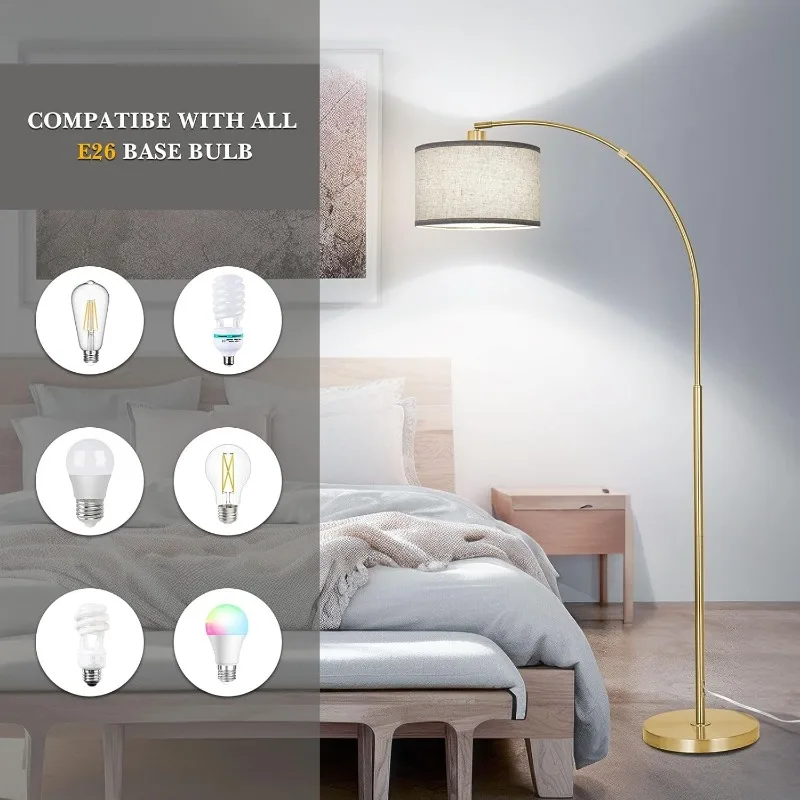
Assessing Your Space Requirements
Before falling in love with a particular lamp design, carefully evaluate the physical parameters of your space to ensure proper fit and function. Ceiling height is perhaps the most critical dimension—ideally, you’ll want at least 7 feet (2.1 meters) of clearance to accommodate the arc without creating a cramped feeling or potential head-bumping hazard. In rooms with standard 8-foot ceilings, look for models with adjustable heights to find the perfect position.
The typical reach of arc lamps ranges from 4 to 6 feet (1.2-1.8 meters) from base to light source. Measure your seating areas to determine what reach you need—the goal is positioning the light approximately 14-18 inches (35-45 cm) above head height when seated, providing ideal illumination without obstructing sightlines or creating glare.
Room size and proportion should guide your selection of lamp scale. In smaller spaces, choose more moderately sized arcs that won’t overwhelm the room, while larger open areas can accommodate more dramatic, oversized designs. Consider the lamp’s visual weight as well—some designs appear lighter and airier while others make a bolder, more substantial statement.
Furniture arrangement significantly impacts optimal lamp placement. Ideally, position the base behind or beside seating areas, with the light extending over the area where illumination is most needed. The perfect arc floor lamp height can dramatically improve both the functionality and visual appeal of your arrangement.
Remember to account for traffic patterns—the arc should be high enough that people can walk comfortably beneath it in areas where pathways cross. This is especially important in multi-functional or open-plan spaces where movement flows through different activity zones.
Selecting Wood Species and Finishes
The wood species and finish you choose will significantly influence how your lamp integrates with your existing décor and contributes to your overall design aesthetic. Beyond mere appearance, different woods offer varying characteristics in terms of durability, grain visibility, and aging patterns.
For Scandinavian or minimalist interiors, lighter woods like ash, maple, or bleached oak create a sense of airiness and contemporary simplicity. These lighter tones blend beautifully with neutral color palettes and allow the graceful form of the arc to take center stage.
Mid-century modern environments benefit from the rich, deeper tones of walnut or teak, which reflect the authentic materials used during this design era’s heyday. These darker woods create striking contrast against lighter walls and upholstery while adding visual weight and substance.
For rustic or industrial-inspired spaces, consider reclaimed woods or those with more prominent grain and character marks. These materials tell a story and add authenticity to spaces that celebrate imperfection and history.
Contemporary or eclectic interiors offer tremendous flexibility—consider how the wood tone will relate to other wooden elements in your space. While exact matching isn’t necessary, choosing tones in the same family creates cohesion, while intentional contrast can create dynamic visual interest.
Regarding finishes, oil-based treatments penetrate the wood to enhance natural beauty while maintaining a matte, organic feel that showcases the material’s innate characteristics. These finishes typically require occasional refreshing but are easily maintained. Lacquer or polyurethane finishes create more surface protection and often result in a glossier appearance that highlights color more than texture, requiring less maintenance but offering a slightly less natural feel.
Shade Materials and Light Diffusion
The lamp shade plays a crucial dual role in both diffusing light effectively and contributing to the overall aesthetic appeal of the fixture. Different materials create distinctly different effects in both illuminated and non-illuminated states.
Linen shades offer excellent light diffusion with a natural texture that complements wooden elements beautifully. The tight weave spreads light evenly while adding textural interest even when the lamp is off. Available in various colors, linen can either blend with backgrounds or create gentle contrast.
Paper shades, particularly those influenced by Japanese design traditions, create a gentle, ethereal glow that’s exceptionally soft and flattering. These delicate options work particularly well in minimalist or Asian-inspired interiors but may require more careful handling and cleaning.
Fabric shades offer the widest range of customization options in terms of color, pattern, and opacity. They can be selected to either make a bold statement or blend seamlessly with existing décor, making them versatile choices for various interior styles.
Metal shades create more directional, focused light rather than ambient glow. This makes them practical choices for reading areas or spaces where task lighting is the primary concern. The contrast between natural wood and metal elements creates an appealing material dialogue in the design.
Rattan arc floor lamps featuring natural fiber shades introduce additional organic texture and create fascinating shadow patterns when illuminated. These intricate, woven materials add visual complexity and work particularly well in bohemian, coastal, or naturally-inspired interiors.
Consider how the shade shape affects light distribution—wider shades cast broader pools of light while narrower options create more focused illumination. The shade’s interior finish also matters; white or metallic interiors reflect and maximize light output, while darker linings create a more intimate, concentrated glow.
Essential Lighting Features and Technology
Beyond aesthetics, the technological features of your wood arc lamp significantly impact its functionality, convenience, and long-term satisfaction. As lighting technology continues to evolve rapidly, considering these aspects carefully ensures you select a lamp that meets modern expectations for performance and versatility.
Dimming capability ranks among the most valuable features, allowing adjustment from bright illumination for reading or activities to softer ambient lighting for relaxation or entertainment. Look for smooth, continuous dimming rather than stepped options for maximum flexibility. Touch dimmers offer convenient operation, while foot dimmers allow adjustment without standing up—particularly valuable for lamps positioned behind seating.
Physical adjustability greatly enhances a lamp’s versatility. Adjustable arc floor lamps allow you to modify height, reach, or angle to accommodate different activities or furniture arrangements. Consider how easily these adjustments can be made—ideally, they should require minimal effort while remaining stable once positioned.
In today’s connected home environments, smart features offer additional convenience and integration. Options may include compatibility with voice assistants (Alexa, Google Home), app-based control, scheduling capabilities, or integration with wider smart home systems. These features, while not essential, can significantly enhance everyday usability.
Energy efficiency matters both environmentally and economically. LED technology offers the best combination of efficiency, longevity, and light quality, typically lasting 25,000-50,000 hours (compared to 1,000-2,000 hours for incandescent bulbs) while consuming significantly less electricity. Look for fixtures with integrated LEDs or those compatible with standard LED replacement bulbs to ensure long-term satisfaction and reduced maintenance.
Bulb accessibility for replacement is another practical consideration often overlooked during selection. Evaluate how easily bulbs can be changed when needed, particularly in taller or more elaborate designs.
Distinct Wood Arc Lamp Styles and Their Ambiance
Wood arc lamps span numerous design traditions, each creating distinctly different moods and complementing various interior aesthetics. Understanding these different style languages helps in selecting a lamp that will integrate harmoniously with your existing décor while creating the specific atmosphere you desire.
Scandinavian-inspired designs typically feature light-colored woods with simple, clean lines and minimal ornamentation. These lamps emphasize functional elegance with gentle curves and often incorporate paper or light-colored fabric shades. The resulting ambiance is airy, calm, and subtly sophisticated—perfect for creating serene, uncluttered environments.
Mid-century arc floor lamps draw from the bold, optimistic design language of the 1950s and 60s. Characterized by dramatic curves, rich wood tones (particularly walnut), and geometric influences, these statement pieces bring vintage charm with contemporary functionality. They typically create stronger visual contrast and pair beautifully with other mid-century furnishings or as standout pieces in eclectic interiors.
Japanese-influenced designs embrace minimalism and natural materials with an emphasis on craftsmanship and subtle detailing. These lamps often feature exposed joinery, paper shades, and an overall sense of lightness and restraint. They create contemplative, peaceful environments where every element feels thoughtfully considered rather than merely decorative.
Industrial fusion styles combine wooden elements with metal components, exposed hardware, or mechanical details. These designs celebrate the contrast between organic and manufactured materials, often featuring darker woods or reclaimed timbers paired with brass, steel, or iron elements. The resulting aesthetic offers rugged sophistication ideal for lofts, converted spaces, or interiors that balance warmth with urban edge.
Contemporary designs push boundaries with innovative joinery, unexpected proportions, or technologically advanced features integrated seamlessly into organic forms. These cutting-edge interpretations often feature sustainable woods or composite materials that maintain natural appearance while offering enhanced performance characteristics.
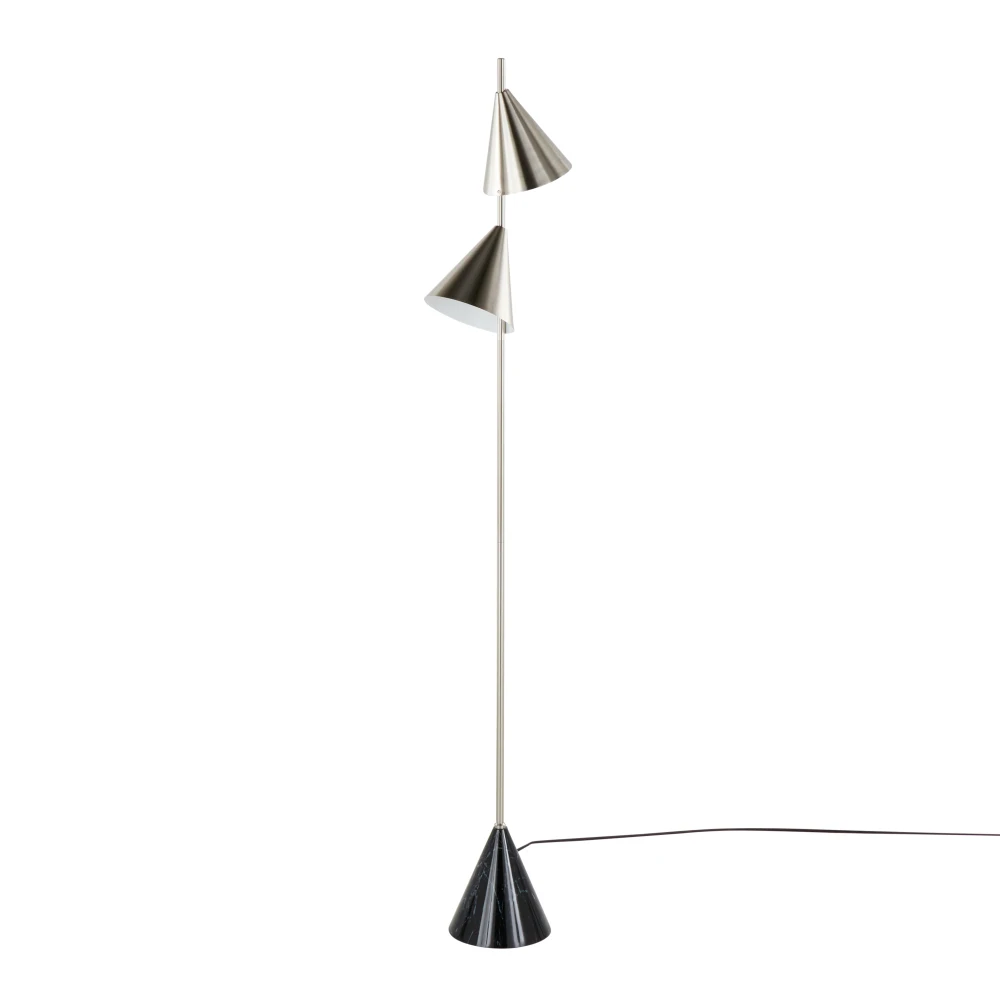
Placement and Integration for Maximum Impact
Strategic placement transforms a beautiful lamp into a transformative design element that enhances both the function and atmosphere of your space. Different room types suggest different placement approaches to maximize both practical illumination and aesthetic impact.
In living rooms, position arc lamps to extend over seating areas where reading, conversation, or other activities occur. The base should typically be placed behind sofas or beside armchairs, allowing the light to reach the appropriate area without the base occupying valuable floor space within the main seating arrangement. This approach creates a defined zone within the larger room, essentially using light to establish an intimate area within an open space.
For dining areas, arc lamps offer an elegant alternative to traditional pendant lighting, with the significant advantage of repositioning flexibility. Center the light over the table, positioning the base at a safe distance to prevent trips or bumps during dining. This arrangement creates the intimate atmosphere of pendant lighting without requiring permanent installation—ideal for rental properties or those who enjoy periodically rearranging their spaces.
In bedrooms, arc lamps excel at creating cozy reading nooks when positioned to extend over one side of the bed or a comfortable chair. The directional nature of the light allows one person to read while minimizing disturbance to a sleeping partner—an advantage over ceiling-mounted options that illuminate the entire room.
The ultimate guide to furniture arrangements with arc lighting demonstrates how these versatile fixtures can define functional zones within multi-purpose spaces. This zoning capability proves particularly valuable in studio apartments or open-concept homes where architectural divisions are minimal.
Layering with complementary lighting sources creates depth and dimension impossible to achieve with a single light source. Combine arc lamps with table lamps, wall sconces, or subtle recessed lighting to create a rich, nuanced lighting scheme that can adapt to different activities and moods throughout the day and evening.
Consider how other elements can enhance the warm atmosphere created by your wood arc lamp. Textiles with similar warm tones or natural textures create material harmony, while plants introduce additional biophilic elements that complement the natural wood components. Thoughtful accessorizing around the lamp—perhaps a small side table with carefully chosen objects beneath the arc—creates a complete vignette that maximizes the fixture’s impact.
Adjustable Arc Floor Lamp, Bronze Arc Floor Lamp
Price range: $440.95 through $558.52 Select options This product has multiple variants. The options may be chosen on the product pageMid-Century Arc Floor Lamp, Wood Arc Floor Lamp
$230.86 Select options This product has multiple variants. The options may be chosen on the product pageLED Arc Floor Lamp, Rattan Arc Floor Lamp
$313.58 Select options This product has multiple variants. The options may be chosen on the product pageVintage Arc Floor Lamp, Wood Arc Floor Lamp
Price range: $603.87 through $1,346.09 Select options This product has multiple variants. The options may be chosen on the product page3 Light Arc Floor Lamp, Dimmable Arc Floor Lamp
Price range: $162.86 through $246.50 Select options This product has multiple variants. The options may be chosen on the product pageMinimalist Arc Floor Lamp, Wood Arc Floor Lamp
Price range: $366.32 through $1,008.61 Select options This product has multiple variants. The options may be chosen on the product page
Care and Longevity of Wood Arc Lighting
Quality wood arc lamps represent a significant investment, and proper care ensures they remain beautiful and functional for decades. Different wood types and finishes require specific maintenance approaches to preserve their appearance and structural integrity.
For oiled wood finishes, occasional refreshing with appropriate wood oil (typically every 6-12 months depending on climate and exposure) maintains the material’s luster and protective properties. Apply the recommended oil sparingly with a soft cloth, following the wood grain, and allow adequate absorption time before buffing to a soft sheen. This simple maintenance not only preserves appearance but prevents drying and potential cracking over time.
Lacquered or polyurethane-finished woods require less frequent maintenance but should be regularly dusted with a soft, slightly damp cloth to prevent buildup that can dull the surface. Avoid commercial polishes containing silicone or harsh chemicals that can damage the protective coating over time. Instead, use cleaners specifically formulated for finished woods when deeper cleaning is necessary.
Shade cleaning varies significantly by material. Fabric and linen shades benefit from regular light vacuuming with a soft brush attachment to remove dust without damaging the material. Paper shades require extremely gentle handling—use a soft, dry paintbrush to remove dust rather than wet cleaning methods that could damage the delicate material. Rattan and natural fiber shades also respond well to gentle vacuuming or compressed air to clean between woven elements.
Environmental factors significantly impact wood longevity. Position lamps away from direct sunlight, which can fade or discolor wood unevenly over time. Maintain moderate humidity levels (30-50%) to prevent excessive drying or swelling of wooden components. Extreme temperature fluctuations can also stress wooden joints and curves, so avoid placing lamps near heating vents, radiators, or in uninsulated areas subject to severe temperature changes.
Electrical components require periodic inspection for frayed cords, loose connections, or damaged switches. Replace bulbs according to manufacturer specifications, being careful not to exceed maximum recommended wattage for both safety and fixture longevity. For lamps with integrated LEDs, while replacement is rarely needed due to their extended lifespan, ensure that the fixture includes access points for potential future service.
Common Questions About Natural Wood Arc Lamps
Are wooden arc lamps stable enough for homes with children or pets?
Quality wood arc lamps are designed with properly weighted bases to ensure stability. Better models feature counterbalanced systems that prevent tipping even when bumped. For added security in active households, some homeowners position the base partially under furniture to provide additional stability or choose models with shorter, less pronounced arcs. The substantial base weight that ensures stability does mean these lamps are quite heavy—a safety feature but something to consider when planning placement.
How do I know if a wood arc lamp will complement my existing furniture?
Rather than exact matching, look for complementary undertones between your lamp and existing wooden elements. Cool-toned woods (ash, maple, some oaks) generally pair well with other cool-toned pieces, while warm woods (walnut, cherry, mahogany) harmonize with similarly warm elements. For mixed-wood interiors, choose the dominant tone or intentionally select a contrasting wood as an accent. Bringing wood samples or detailed photos when shopping can help ensure harmonious integration.
What’s the difference between true wood and wood-look finishes?
Authentic wood arc lamps feature genuine wooden components with natural variation in grain, color, and character marks that make each piece subtly unique. Wood-look alternatives typically use engineered wood products, laminates, or printed finishes that mimic wood grain. While these alternatives may offer cost advantages, they lack the dimensional character, natural warmth, and aging properties of genuine wood. Solid wood construction also typically allows for refinishing if damaged, extending the lamp’s usable lifespan.
Can arc lamps provide sufficient light for reading or detailed tasks?
With appropriate bulb selection and positioning, arc lamps can provide excellent task lighting. For reading or detail work, position the light source 16-18 inches (40-45 cm) from your material at a slight angle to prevent shadowing or glare. Bulbs with higher lumen output (800+ lumens, equivalent to traditional 60W incandescent) create adequate brightness, while those with color temperatures around 3000K balance warmth with clarity. Adjustable arc lamps offer particular advantage for task lighting as they can be precisely positioned for optimal illumination.
What makes a quality wood arc lamp worth the investment?
Superior wood arc lamps distinguish themselves through several key factors to look for in arc floor lamps, including quality of materials, craftsmanship, and engineering. High-quality options feature solid wood components (rather than veneers or laminates), precision joinery, smooth mechanical operations, and thoughtfully designed weight distribution. While initial cost is higher, these fixtures typically offer decades of service compared to the relatively short lifespan of less expensive alternatives. Additionally, their timeless design and natural materials tend to transcend trends, making them enduring pieces that won’t soon look dated.
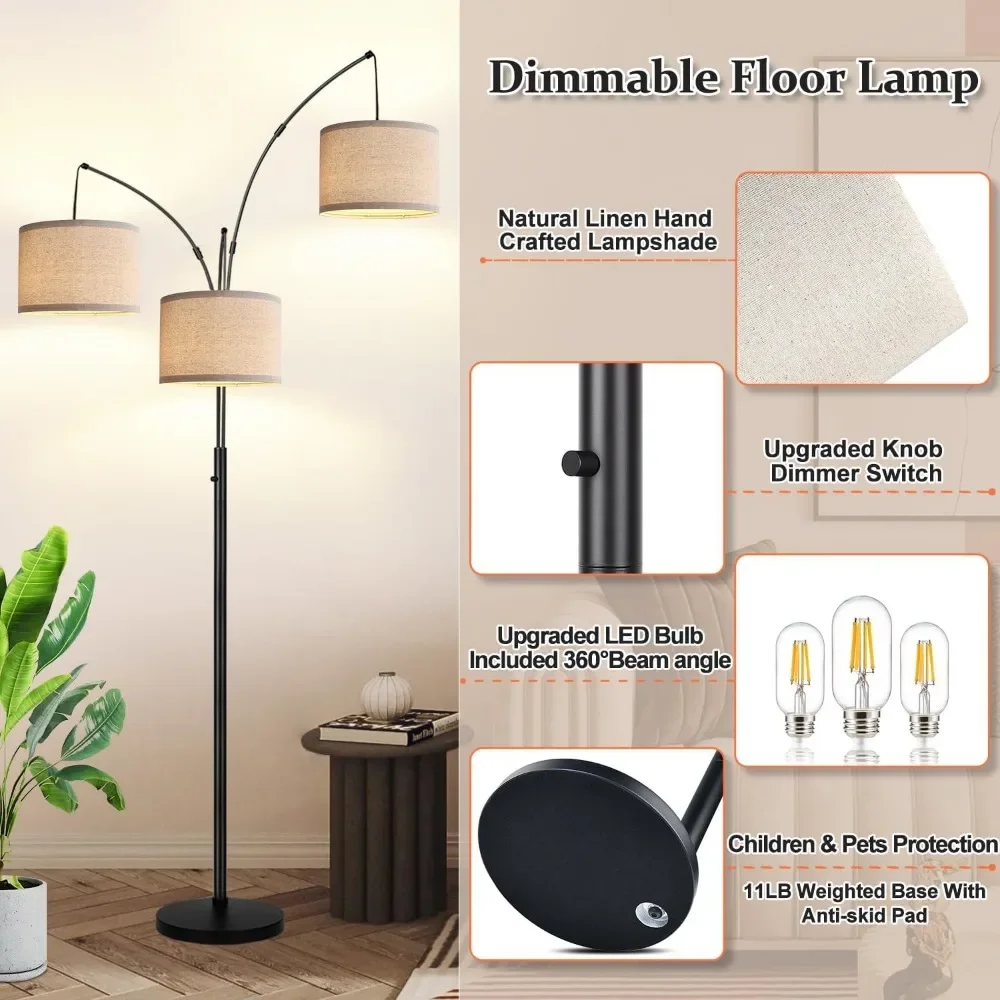
Creating Your Sanctuary: The Transformative Power of Wood Arc Lighting
The unique combination of natural materials, sculptural form, and quality illumination makes wood arc lamps extraordinary tools for creating spaces that feel both designed and deeply welcoming. Unlike purely decorative elements or strictly functional fixtures, these lamps operate at the intersection of art and utility—beautifying your space while simultaneously enhancing how you experience and use it daily.
The organic warmth of wood brings nature’s soothing presence into our increasingly technological lives. The graceful arc introduces movement and softness into our often rectilinear built environments. And the quality of light—warm, flattering, and adjustable—transforms the atmosphere of a room in ways that affect not just how spaces look, but how they make us feel.
This emotional component of lighting is too often overlooked in interior design discussions that focus primarily on aesthetics. Yet research consistently shows that our lighting choices significantly impact our mood, energy levels, and even social interactions. Creating warm lighting environments in living rooms contributes to our psychological comfort in ways both subtle and profound.
In a world where our homes increasingly serve multiple functions—workplace, sanctuary, entertainment center, gathering space—investing in lighting that adapts to these varied needs while maintaining beauty and character represents a meaningful enhancement to daily life. Interior Ivy’s collection of thoughtfully designed wood arc lamps offers this versatility without compromise, allowing you to create spaces that are not only visually appealing but genuinely supportive of well-being.
The most successful interior spaces tell a cohesive story, where each element feels purposeful rather than arbitrary. Natural wood arc lamps contribute to this narrative through their honest materials, intentional design, and the warm glow they cast—creating environments that feel curated rather than simply decorated, and that welcome rather than merely impress.

